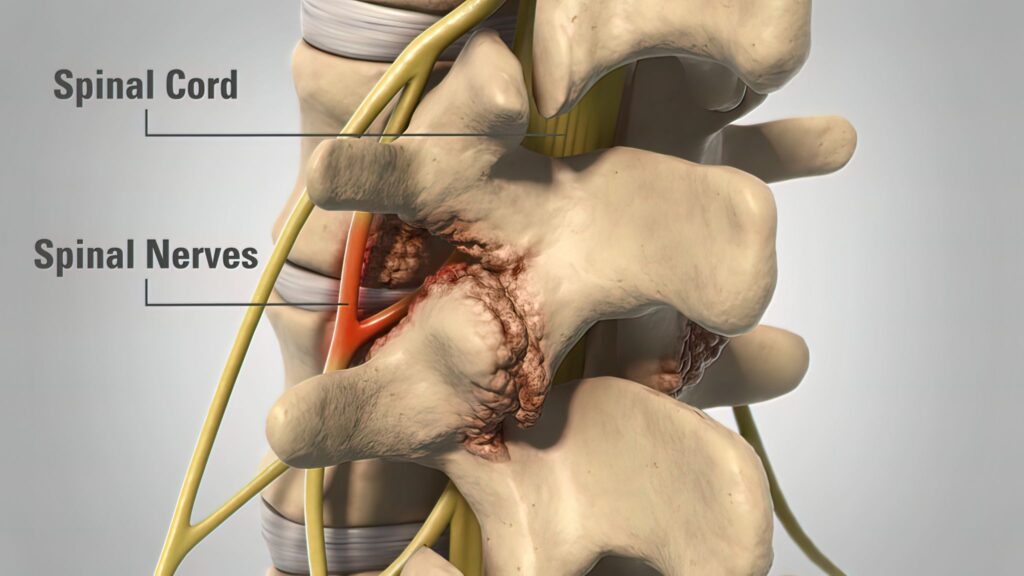- (213) 369-4583
- Monday - Friday
- 9 am - 5 pm
Lumbar Laminectomy Surgery: Procedure, Risks and Recovery

Mar 30, 2022
Pain relievers, exercise, massages, meditation… you’ve tried it all. Yet that pain in your back and legs persists. Now, you’re starting to wonder: Is Lumbar Laminectomy Surgery the answer? The decision to have spine surgery can be difficult and the myths floating around about surgery don’t make the decision any easier. Before you jump to a conclusion, learn the truth behind these myths about spine surgery, and be sure to discuss any questions and concerns with your physician.
In this blog, we will walk you through the whole experience of a patient who undertakes Lumbar Laminectomy Surgery. After reading this blog till the end, you will be in a better position to decide if Laminectomy Surgery is for you. Let’s dive in!
What is Lumbar Laminectomy Surgery?

It is a surgical procedure performed to treat the symptoms of central spinal stenosis or narrowing of the spinal canal that includes back pain, numbness, tingling, cramping, or weakness of the legs, and loss of sensation in the feet. Lumbar laminectomy is typically considered after non-surgical treatments like physical therapy, medications, or epidural steroid injections.
Procedure
Laminectomy also known as decompression surgery is a procedure that creates space by removing the lamina (the back part of vertebrae that covers your spinal canal) to relieve pressure on the spinal cord or nerves.
Why is it done?
- To relieve the pressure symptoms.
- To treat muscle weakness or numbness that makes walking or standing difficult.
- To improve bladder or bowel control.
- In some situations, Laminectomy may be necessary as a part of surgery to treat herniated spinal discs. Your surgeon may need to remove the part of the lamina to gain access to the damaged disc.
Pre-op preparation
- Avoid eating or drinking anything after midnight on the night before your Laminectomy.
- Avoid certain medications as per the advice of your regular doctor.
- You will be given general anesthesia before the operation and the next moment you become conscious, the procedure will be complete.
During the procedure
The surgical team will monitor your heart rate, blood pressure, and blood oxygen levels throughout the procedure. After you are unconscious, the surgeon will make an incision in your back over the affected vertebrae, moving the muscles away from the spine as needed. In this surgery, small instruments are used to remove the appropriate lamina as minimally invasive surgeries typically use smaller incisions than those used for open surgeries.
If during the procedure one of your vertebrae slipped over one another or if you have curvature of the spine, spinal fusion may be necessary to stabilize your spine, which includes the fusion of two or more vertebrae together using bone grafts.
Post Lumbar Laminectomy Surgery
- After Lumbar Laminectomy Surgery, you will be moved to the recovery room and the healthcare team will watch for complications of surgery and anaesthesia.
- You may also be asked to move your arms and legs
- You might go home on the same day of surgery although some patients need a small hospital stay
- Your doctor may recommend physical therapy after Laminectomy to improve your strength and flexibility
- Depending on the amount of lifting, walking, sitting your job involves, you maybe able to work within a few weeks
Pain management
- Pain relieving medications are used while avoiding NSAIDs as they delay bone healing.
- Stool softeners are used to avoid constipation in the initial weeks of surgery.
Incision care
Avoid swimming , bathing and hot tubs until the wound is completely healed.
Compression stockings
These can be used to prevent formation of blood clots and improve blood circulation.
Risks of surgery
Laminectomy is generally a safe procedure, but as with any surgery complications, one can experience the following;
- Bleeding
- Infection
- Nerve injury
- Spinal fluid leak
Post Laminectomy syndrome
People suffering from Post Laminectomy syndrome complain about experiencing persistent back pain along with numbness and stiffness near the incision area.
As a result of the pain, patients have difficulty performing their routine activities and may experience difficulty in sleeping as well. The longer the pain lasts, the more of an impact it can have on the patient’s life resulting in depression and anxiety.
Treatment options may vary. Below are some of the options your doctor may recommend.
- Pain relievers - Prescribing painkillers are generally the first-line treatment which is later followed by morphine-based medication in case of extreme pain.
- Physical therapy - Patients are put to physical therapies once the wound is healed enough to bear minor stress (4 to 6 weeks after the surgery). You will be required to consult a physical therapist who will prescribe you a few exercises to relieve pain and get better with overall body movement.
- Specialist therapies - Depending upon the recovery rate of the patient, special treatments like platelet-rich plasma therapy and radiofrequency nerve block can also be considered.
Recovery

Complete recovery can take anywhere between a couple of weeks to a few months depending upon the patient’s age, general health, and the number of segments treated. To better understand how post-surgical life looks like you can read one of our other articles on what to expect after a Laminectomy.
Post-surgery precautions
- You will need to limit your activities including bending, stooping, and lifting for several weeks. You will also need to keep the incision site clean and dry.
- Your stitches will be removed after about two weeks. As you walk the spinal cord naturally expands, if the spinal cord is unable to expand due to a narrow spinal canal, your legs will feel fatigued sooner. To lessen the pressure on the spinal cord, take small breaks when you walk.
- People with minimally invasive procedures generally need 4 weeks before they can engage in minor physical activities.
- Walking is the best exercise you can do after surgery
- Driving can be resumed after 2 weeks if there is an overall health improvement.
Talk to an Expert
If you are still confused about deciding whether Laminectomy surgery is for you or not, you must discuss your case with a neurosurgeon. Here at Southern California Brain and Spine Surgery, Dr. Moksha Ranasinghe provides healthcare services to patients suffering from brain and spinal problems. She is a board-certified neurosurgeon and will listen to your concerns and make an appropriate treatment plan according to your medical condition. For more information, you can explore our website or give us a call at (213) 369-4583.




